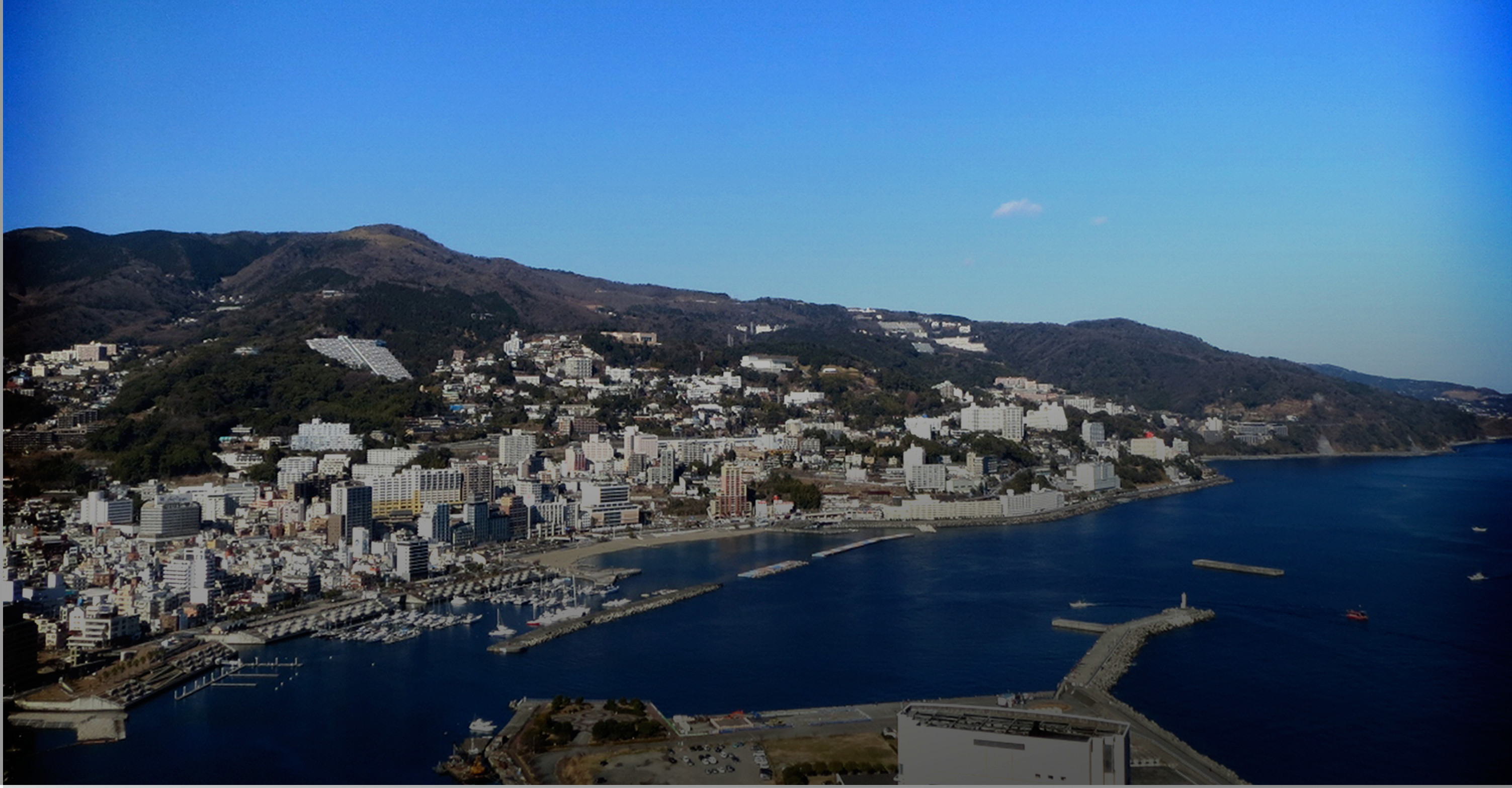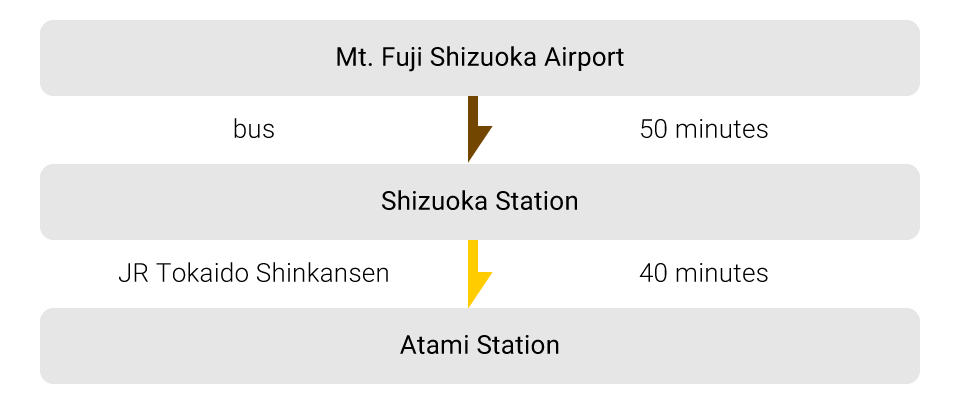Best Places in Atami

Atami is a city in Shizuoka Prefecture less than one hour from Tokyo. It is a leading resort area in Japan, with 6 million visitors per year drawn by the sea and mountains, hot springs, and mountain passes for viewing Mt. Fuji. You can walk around and enjoy the pleasures of the town and the food culture developed in the unique Atami culture. If you head for the highest point in Atami, you can view the incomparable Mt. Fuji landscape.
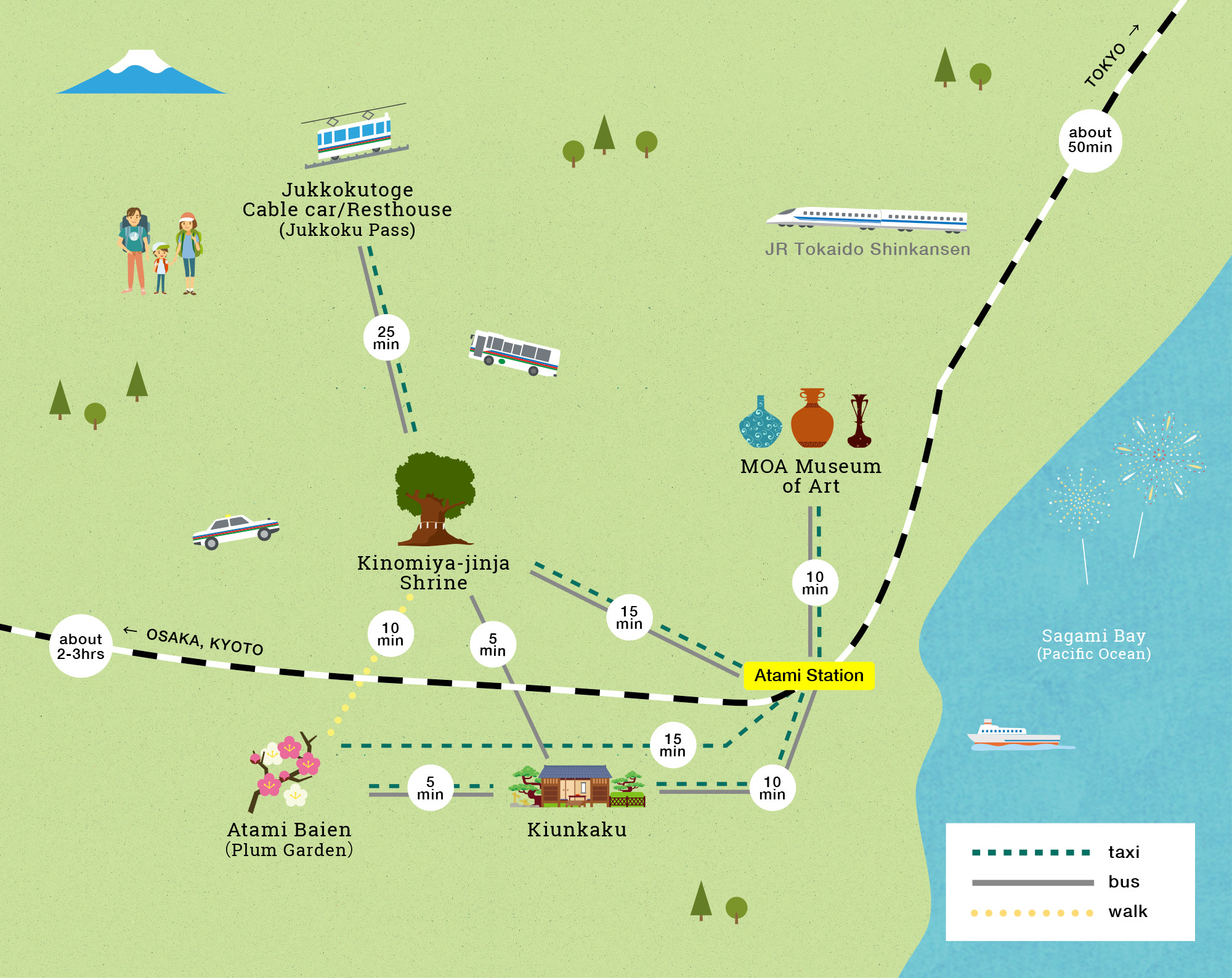
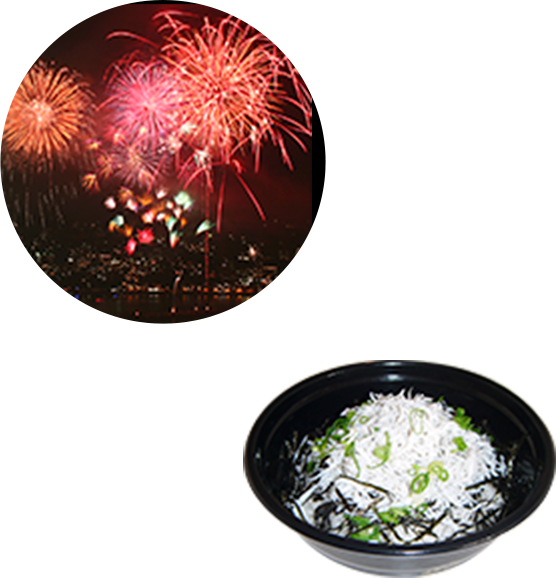
What’s Special About the
Atami Area
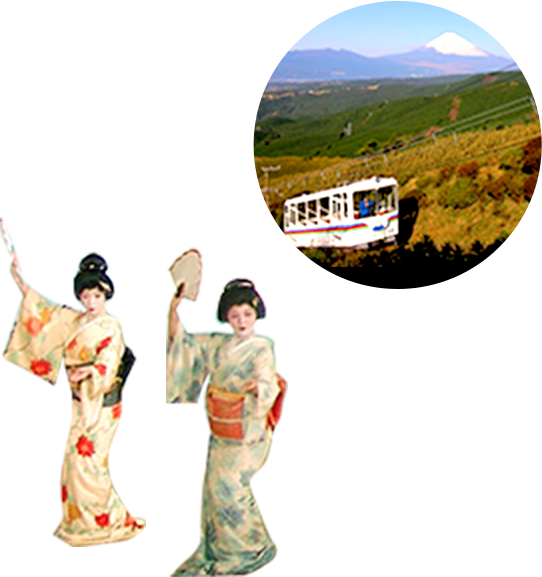
-


Jukkoku-toge
Cable car/Resthouse
(Jukkoku Pass)-
Jukkoku-toge Pass is at the highest point in Atami and is a view spot where you can view Mt. Fuji, which is registered as a world cultural heritage site. You can reach the peak in 3 minutes by cable car and enjoy the splendid vista looking out over what was called Jukkoku (Ten Countries) until the 19th century. Jukkoku-toge Pass is a part of the Yugawara volcano, an old volcano formed by the collision of the Izu Peninsula into the main Japanese island, Honshu, driven by the shifting of the tectonic plates that cover the Earth’s surface. From the peak, you can view the topology of Izu Peninsula and the Izu Islands, formed by four of these tectonic plates (including the sea bottom Pacific Ocean plate) and volcanoes over the long years, along with the Izu Islands,
-
-


Kinomiya-jinja
Shrine-
At Kinomiya-jinja Shrine, people have historically believed in its deity of good fortune and good portents. The “Giant Camphor Tree” in Kinomiya-jinja Shrine is officially designated as a natural monument and regarded as a sacred tree. It is more than 2000 years old and is visited by many visitors and worshipers. It is said that if you walk around the trunk once, you will live a year longer and that your wishes will be granted. A cafe and facilities for a break are provided so that you can stroll about the shrine precincts at your leisure.
-
-


MOA Museum
of Art-
Houses about 3,500 East Asian art works, such as national treasures and important cultural assets. Glorious views of Sagami Bay spread out from the main lobby and the MOA Plaza. In the Ippakuan Tearoom, you'll find a relaxed quiet atmosphere where you can enjoy Japanese confections and matcha tea while viewing the scenery of the four seasons in the beautiful Japanese garden.
Access
From JR Atami Station, 10 minutes by bus or taxi
-
-


Atami Baien
(Plum Garden)-
Atami Baien (Plum Garden) is known as the sightseeing spot for the earliest plum blossoms and the latest autumn colors in Japan. This garden of about 46,000 square meters has plum trees, cherry trees, and trees with beautiful autumn foliage, so you can enjoy it through all four seasons. There is also a hot spring footbath in the garden, a pleasantly bustling place where you can soak away your fatigue from walking around the Plum Festival or the Maple Festival. The Maple Festival is held every year in November or December and the Plum Festival sometime between January and March. (The exact timing depends on the weather that year.)
-
-


Kiunkaku
-
This building, constructed in 1919, fuses Japanese and Western and was innovative for its time. During its days as an inn after the war, it was favored by such cultural luminaries as authors Osamu Dazai and Junichiro Tanizaki. You can also spend a relaxing time in the “Yasuragi” (Serenity) Teahouse immersed in traces of those times.
-
-


Specialty of the
Atami area-
In the small, unique stores that line Atami’s streets, you can enjoy a wealth of seafood, including seafood donburi (sashimi on rice) made from fresh ingredients caught in the nearby sea and unique Japanese versions of Western dishes created during Japan’s Westernization during the late 19th century and early 20th century. In Atami, with its history as a hot springs health resort, the confectionery culture with which we fete visitors has deep roots. You will find tasty momentoes to take home with you.
-
Access to Atami
▶From the JR Tokyo Station
▶From the JR Kyoto or Osaka Station
▶From Haneda Airport
▶From Mt. Fuji Shizuoka Airport
*You can use the Japan Rail Pass only for JR trains.



